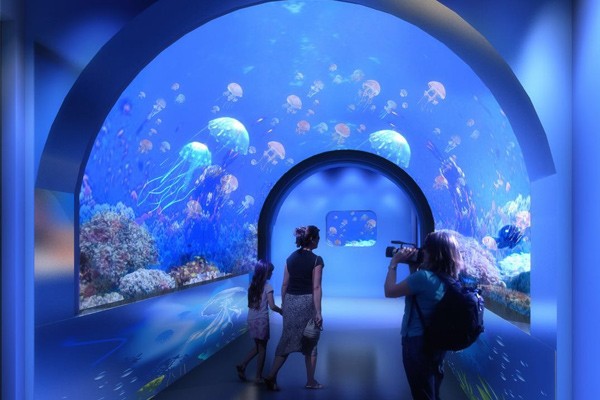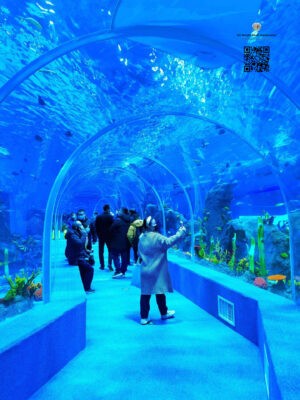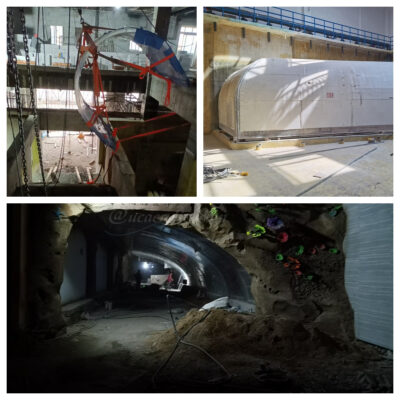Acrylic Undersea Tunnel
An acrylic undersea tunnel offers a remarkable and immersive experience. It allows visitors to witness the beauty and diversity of the underwater world up close. The transparent acrylic tunnel provide a crystal-clear view of various marine species swimming freely, creating an unparalleled underwater adventure.
This engineering feat not only showcases the technological advancements in construction but also serves as a platform for education and appreciation of the ocean’s ecosystems. It enables people to gain a deeper understanding and respect for the delicate balance of nature beneath the surface.
Such tunnels are often found in aquariums or marine-themed attractions, attracting people of all ages and enhancing their connection with the wonders of the sea.
The significance of the construction of acrylic undersea tunnel
The construction significance of the acrylic submarine tunnel is as follows:
Firstly, it offers people an extraordinary and immersive experience, allowing them to have a close encounter with the magnificent underwater world. Through the transparent acrylic panels, they can observe various marine creatures swimming freely, which greatly enriches people’s visual experience.
Secondly, it serves as an important educational platform. It helps people better understand the complexity and diversity of marine ecosystems, raising public awareness of marine conservation.
Furthermore, it attracts a large number of tourists and has a positive impact on local tourism and economic development. It also showcases advanced construction techniques and technological capabilities.
Finally, it deepens people’s connection with the ocean and enhances their sense of responsibility for protecting the marine environment. It reminds us of the importance of maintaining the ecological balance of our planet.
What factors should be considered when building an acrylic undersea tunnel?
When building an acrylic submarine tunnel, the following factors need to be considered:
Material quality: The quality and strength of the acrylic itself to ensure its durability and safety.
Structural design: A stable submarine tunnel must account for environmental forces and water currents.
Water pressure: Accounting for the water pressure at different depths to prevent deformation or damage.
Visibility & Clarity: The transparency of the acrylic submarine dome ensures a seamless viewing experience.
Installation and maintenance: Considering convenient installation methods and subsequent maintenance requirements.
Safety measures: Incorporating safety features such as emergency exits and proper ventilation.
Environmental Considerations: The undersea tunnel construction must minimize disruption to marine ecosystems.
Cost-effectiveness: Balancing the construction cost with the expected benefits and functionality.
Compatibility with marine life: Reducing any negative impacts on the behavior and habitats of marine organisms.
How to ensure the cleanliness of water when building an acrylic undersea tunnel?
To ensure clean water quality when building an acrylic submarine tunnel, the following measures can be taken:
Firstly, a proper filtration system needs to be installed. This includes mechanical filters to remove particulate matter, biological filters to handle organic waste, and chemical filters to adjust water parameters.
Secondly, regular water testing and monitoring are essential to detect any changes in water quality promptly and take corrective actions.
Water circulation and aeration systems are crucial to maintain oxygen levels and prevent stagnation.
Proper management of feeding to avoid excessive food residues that can affect water quality.
Regular cleaning and maintenance of the tunnel and related equipment to prevent the accumulation of dirt and debris.
Use of water treatment chemicals in appropriate amounts and as per guidelines to maintain the desired water conditions.
Establishment of strict hygiene and sanitation practices to minimize the introduction of contaminants.
Implementation of quarantine procedures for new organisms introduced to the tunnel to prevent the spread of diseases or parasites that could impact water quality.





